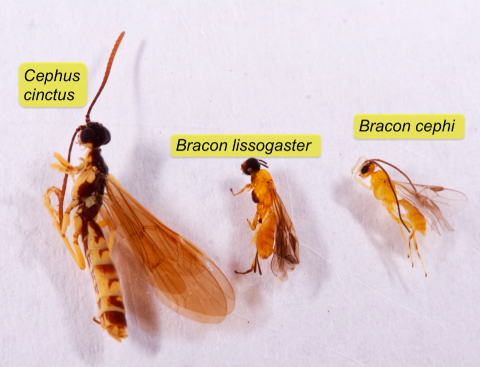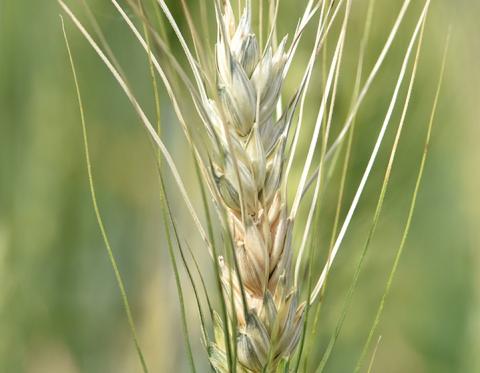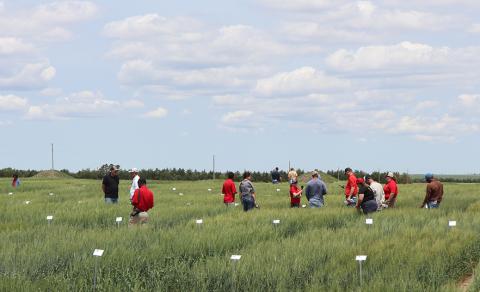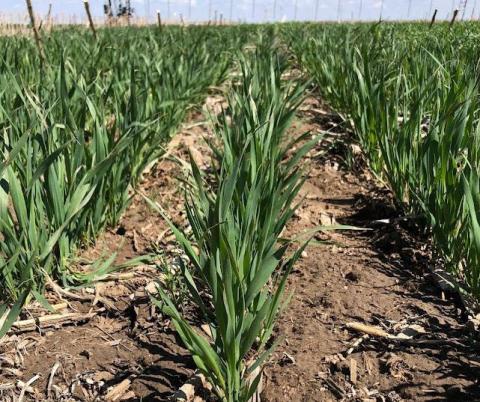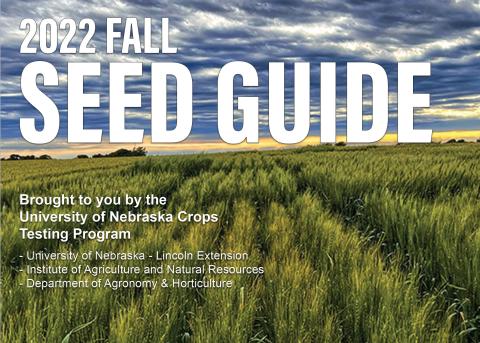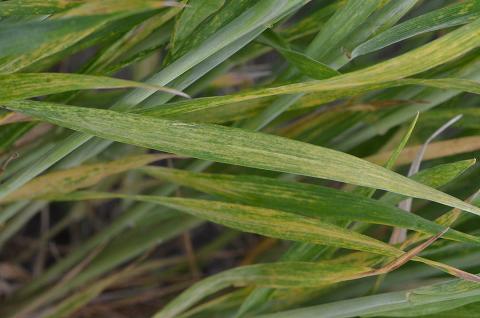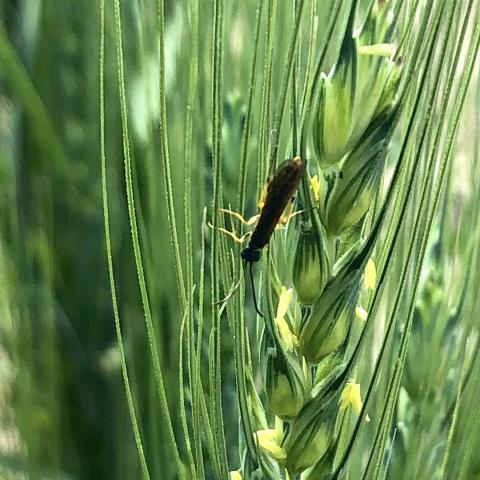Wheat Stem Sawfly Flights Peaked, New Reports of Range Expansion
June 12, 2024
In addition to confirming the presence of wheat stem sawfly in new Nebraska counties this year, Nebraska Extension anticipates fairly high pressure from the crop pest this growing season.
Uncommon Wheat Disease in the Nebraska Panhandle in 2023
April 24, 2024
Though rare for semi-arid regions, Fusarium head blight was present in the Nebraska Panhandle's 2023 wheat crop, and its effects have already been observed in this year's crop. This article highlights control options to mitigate yield loss in 2024.
UNL Schedules 2024 Wheat Variety Tours
April 4, 2024
During each of the eight tours across Nebraska in June, members of the UNL wheat research team and seed industry partners will share insights on varieties and answer questions about variety selection, production and pest/disease concerns.
Evaluation of Diverse Cover Crops Across Nebraska: Findings from Spring-planted Cover Crops in 2022
February 23, 2023
Results from 2022 variety trial research conducted on numerous cover crop species at five UNL research stations across Nebraska.
Fall 2022 Seed Guide Available
September 1, 2022
The 2022 Fall Seed Guide includes details on yield, protein, test weight, ratings for disease characteristics, location summaries and weather information from this year's winter wheat trials.
Wheat Disease Update: Barley Yellow Dwarf and Wheat Streak Mosaic
June 9, 2022
Widespread wheat streak mosaic and severe barley yellow dwarf have been scouted in Panhandle wheat fields.
Wheat Stem Sawfly Emergence — Field Notes from Early June
June 7, 2021
Recent observations indicate very high populations of wheat stem sawfly in Nebraska wheat fields, with emergence not only from field edges but also deep within fallow fields. Documentation on infestations is encouraged for successful fall sawfly management.
2020 Corn Hybrid Trial Data Available
October 29, 2020
This year, the Nebraska State Variety Trial team resumed corn hybrid trials. These were planted at four rainfed sites (Saunders, Clay, Perkins, and Cheyenne counties) and two irrigated sites (Clay and Perkins counties).
